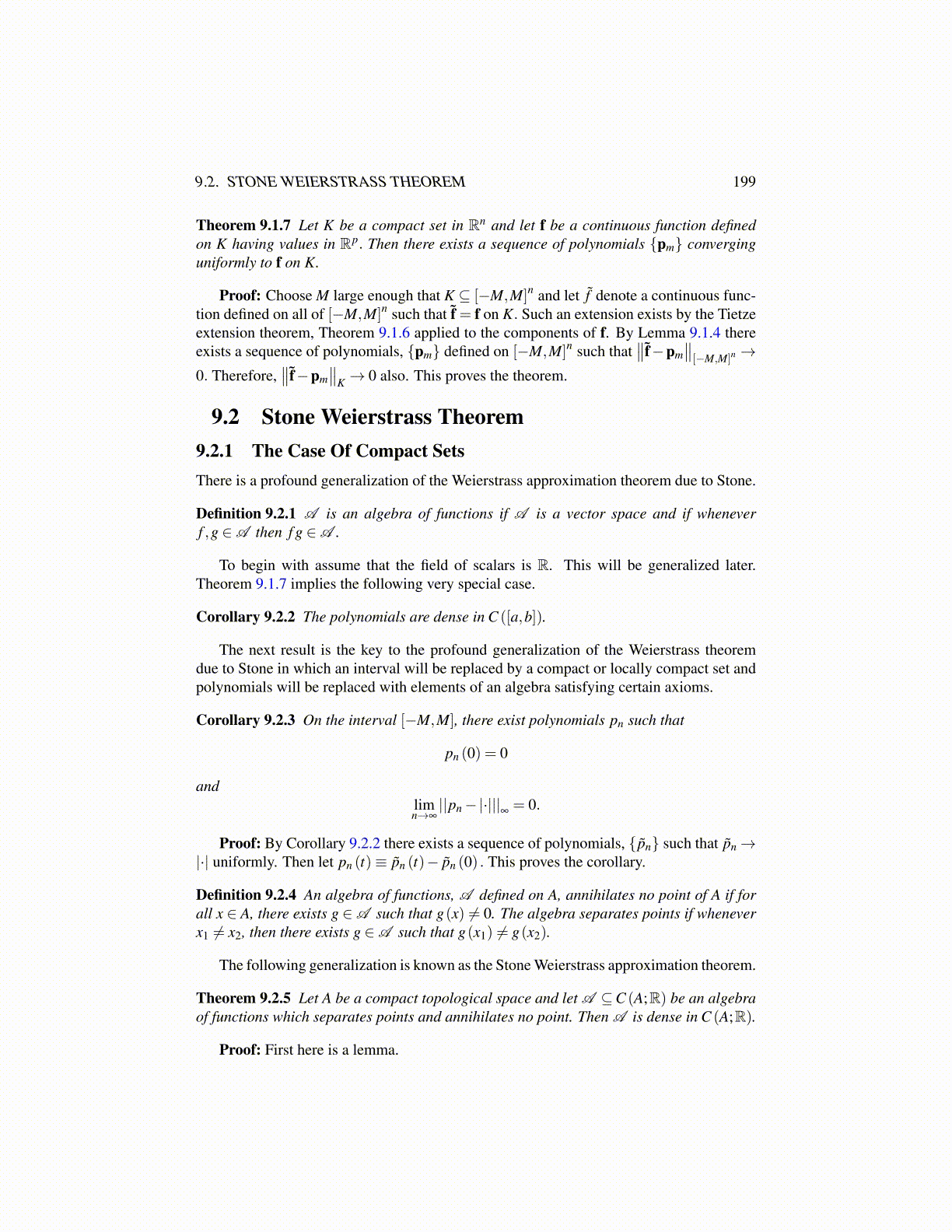
9.2. STONE WEIERSTRASS THEOREM 199
Theorem 9.1.7 Let K be a compact set in Rn and let f be a continuous function definedon K having values in Rp. Then there exists a sequence of polynomials {pm} converginguniformly to f on K.
Proof: Choose M large enough that K ⊆ [−M,M]n and let f̃ denote a continuous func-tion defined on all of [−M,M]n such that f̃ = f on K. Such an extension exists by the Tietzeextension theorem, Theorem 9.1.6 applied to the components of f. By Lemma 9.1.4 thereexists a sequence of polynomials, {pm} defined on [−M,M]n such that
∥∥f̃−pm∥∥[−M,M]n
→0. Therefore,
∥∥f̃−pm∥∥
K → 0 also. This proves the theorem.
9.2 Stone Weierstrass Theorem9.2.1 The Case Of Compact SetsThere is a profound generalization of the Weierstrass approximation theorem due to Stone.
Definition 9.2.1 A is an algebra of functions if A is a vector space and if wheneverf ,g ∈A then f g ∈A .
To begin with assume that the field of scalars is R. This will be generalized later.Theorem 9.1.7 implies the following very special case.
Corollary 9.2.2 The polynomials are dense in C ([a,b]).
The next result is the key to the profound generalization of the Weierstrass theoremdue to Stone in which an interval will be replaced by a compact or locally compact set andpolynomials will be replaced with elements of an algebra satisfying certain axioms.
Corollary 9.2.3 On the interval [−M,M], there exist polynomials pn such that
pn (0) = 0
andlimn→∞||pn−|·|||∞ = 0.
Proof: By Corollary 9.2.2 there exists a sequence of polynomials, {p̃n} such that p̃n→|·| uniformly. Then let pn (t)≡ p̃n (t)− p̃n (0) . This proves the corollary.
Definition 9.2.4 An algebra of functions, A defined on A, annihilates no point of A if forall x ∈ A, there exists g ∈A such that g(x) ̸= 0. The algebra separates points if wheneverx1 ̸= x2, then there exists g ∈A such that g(x1) ̸= g(x2).
The following generalization is known as the Stone Weierstrass approximation theorem.
Theorem 9.2.5 Let A be a compact topological space and let A ⊆C (A;R) be an algebraof functions which separates points and annihilates no point. Then A is dense in C (A;R).
Proof: First here is a lemma.